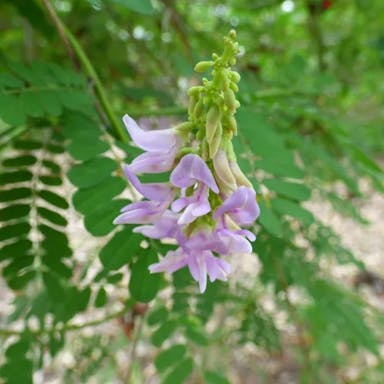Cardiospermum grandiflorum, commonly known as Balloonvine, is a plant species that belongs to the Sapindaceae family. It is native to South America, specifically Brazil, Argentina, and Paraguay. This plant is a perennial climber that can reach a height of up to 10 meters. The flowers of Cardiospermum grandiflorum are large and showy, with a diameter of about 2 centimeters. They are typically white or cream-colored, although some varieties may have pink or purple hues. The flowers are arranged in clusters and have a unique heart-shaped structure at the base, which gives the plant its name. The fruit of Cardiospermum grandiflorum is a capsule that resembles a small balloon, hence the common name Balloonvine. When mature, the capsules turn brown and become papery, containing three seeds with a distinctive heart-shaped mark on them. These seeds are often used in traditional medicine for anti-inflammatory properties. Cardiospermum grandiflorum is relatively easy to grow and can thrive in varying types of soil. It prefers full sunlight or some shade and regular watering. This plant is often used as an ornamental climber in gardens and can be trained onto trellises or fences. It attracts butterflies and other pollinators.
0
0












